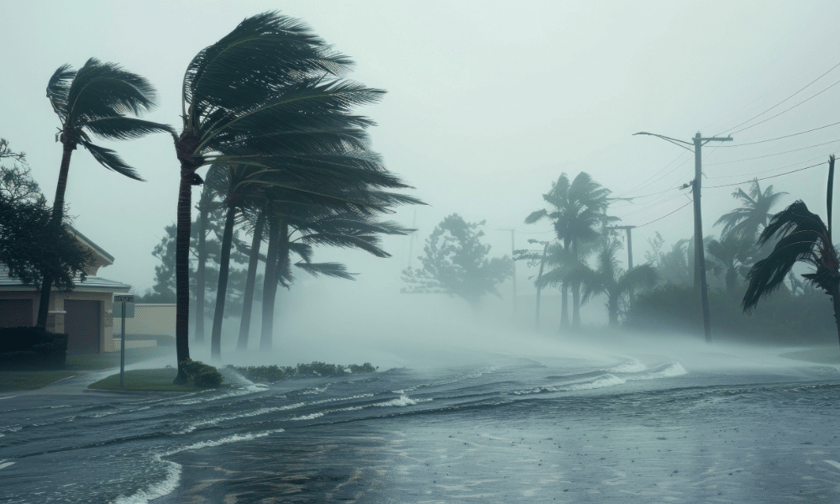

Neptune Flood, the largest private flood insurer in the US, has published an analysis on the impacts of Hurricanes Helene and Milton, examining both the immediate challenges and broader issues within the U.S. flood insurance market.
Hurricane Helene has significantly affected the National Flood Insurance Program (NFIP). As of Nov. 4, over 55,000 NFIP claims have been filed, with expectations that this figure will surpass 60,000. The storm has already exceeded the claims filed after Hurricane Ian, which previously ranked as the fourth largest storm in NFIP’s history.
As per Neptune Flood’s analysis, NFIP’s average claim payouts for recent major hurricanes suggest total losses from Helene could fall between $6 billion and $7 billion, potentially making it a larger financial strain than Ian’s $4.9 billion in losses. The NFIP has also reported over 18,000 claims related to Hurricane Milton, with losses projected to be about 30%-50% of those from Helene, putting it among NFIP’s top 10 loss events.
Beyond Helene and Milton, other storms in 2024, including Hurricanes Beryl, Debby, and Francine, have contributed to more than 20,000 additional NFIP claims. With approximately $4 billion in premium revenue for the NFIP, total expected losses for 2024 of between $8.2 billion and $10.5 billion are anticipated to drive the NFIP’s loss ratio above 200%.
The private flood insurance market in Florida has also seen notable losses. By November 8, the Florida Office of Insurance Regulation (FLOIR) reported 6,183 private flood claims from Helene and Milton combined, with 1,976 claims paid, totaling $197 million. Estimates place total private flood losses at over $500 million, with $300 million attributed to Helene and $200 million to Milton.
Increasingly, policyholders are turning to the private market due to limitations in NFIP coverage, which caps building coverage at $250,000 and contents at $100,000 for residential properties, with no provisions for temporary living expenses or other structures. The private market offers higher limits and flexible coverage, providing more options in high-value areas like coastal Florida.
In Pinellas County, Fla., the impact of Hurricane Helene has brought to light the region's substantial flood exposure. While Hurricane Eta in 2020 and Hurricane Idalia in 2023 generated NFIP payouts of $51 million and $136 million, respectively, over 22,000 NFIP claims have been filed following Helene, amounting to nearly 40% of all claims from the storm, with expected payouts exceeding $2 billion. An additional 2,000 claims have been filed from Milton.
However, post-storm surveys in Pinellas identified over 40,000 properties affected by floodwaters, suggesting many properties were uninsured or self-insured.
Since the NFIP implemented its Risk Rating 2.0 system in 2021, intended to replace older rating methodologies with risk-based pricing, the NFIP has seen its insured base drop from 4.08 million buildings to 3.53 million over 34 months. Although the new rating model aims to bring premiums to actuarial levels, congressional caps limiting annual rate increases to 18% mean that full premium compliance will not be achieved until 2047.
Policy declines have occurred across 41 states, with homeowners either dropping NFIP coverage or moving to private flood insurers. Florida, however, has seen a modest policy increase due to a 2022 state law requiring flood insurance for Citizens Property Insurance policyholders.
One challenge for the NFIP remains its use of outdated flood maps to set coverage requirements. Although Risk Rating 2.0 has moved away from using flood maps in pricing, federal mandates still require flood insurance for properties with federally backed mortgages located in Special Flood Hazard Areas (SFHAs).
Broward County, Fla., which updated its flood maps for the first time in 40 years, added 88,000 properties to SFHAs. Nationwide, over 3,000 FEMA flood maps are more than 15 years old. Emerging technology-based mapping tools could help modernize flood risk assessments and better inform homeowners about their flood exposure.
Education is another factor impacting flood coverage. Many homeowners mistakenly believe their standard property insurance covers flood damage or assume they are not at risk if located outside SFHAs.
However, the First Street Foundation estimates that 14.6 million US buildings face substantial flood risk, with 5.9 million outside designated high-risk areas. The foundation also projects that an additional 8.9 million buildings will be at risk over the next 30 years.
As Florida begins to recover from Hurricanes Helene and Milton, the dynamics of the flood insurance market continue to evolve. While some flooded properties are being sold at land value and rebuilt to be more flood-resilient, others are being repaired without major improvements, leaving them vulnerable to future storms.
FEMA’s “Substantial Improvement and Substantial Damage” rule mandates that repairs to buildings with damage exceeding 50% of the structure’s market value must comply with current building codes. FEMA has recently taken enforcement actions in Lee County post-Hurricane Ian, and similar enforcement may apply to counties affected by Helene and Milton.
The Small Business Administration disaster loan program, which provides funds for property repairs, is currently unfunded pending Congressional action.
Addressing the issues in the flood insurance market will require collaboration among insurers, reinsurers, capital providers, and government agencies. Other states may look to Florida’s model mandating flood insurance for certain policyholders as a means to increase resilience and lessen reliance on public programs.
Modernizing flood maps, raising public awareness, and expanding insurance coverage are crucial steps toward creating a sustainable flood insurance system and reducing the financial impact on taxpayers.
What are your thoughts on this story? Please feel free to share your comments below.
